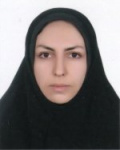| نویسندگان | Mohammad Ehteram,Saad Sh. Sammen,فاطمه پناهی,Lariyah Mohd Sidek |
|---|
| نشریه | ENVIRON SCI POLLUT R |
|---|
| شماره صفحات | 1 |
|---|
| شماره مجلد | 28 |
|---|
| ضریب تاثیر (IF) | ثبت نشده |
|---|
| نوع مقاله | Full Paper |
|---|
| تاریخ انتشار | 2021-07-30 |
|---|
| رتبه نشریه | علمی - پژوهشی |
|---|
| نوع نشریه | الکترونیکی |
|---|
| کشور محل چاپ | ایران |
|---|
| نمایه نشریه | JCR |
|---|
چکیده مقاله
The agricultural sector is one of the most important sources of CO2 emissions. Thus, the current study predicted CO2 emissions based on data from the agricultural sectors of 25 provinces in Iran. The gross domestic product (GDP), the square of the GDP (GDP2), energy use, and income inequality (Gini index) were used as the inputs. The study used support vector machine (SVM) models to predict CO2 emissions. Multiobjective algorithms (MOAs), such as the seagull optimization algorithm (MOSOA), salp swarm algorithm (MOSSA), bat algorithm (MOBA), and particle swarm optimization (MOPSO) algorithm, were used to perform three important tasks for improving the SVM models. Additionally, an inclusive multiple model (IMM) used the outputs of the MOSOA, MOSSA, MOBA, and MOPSO algorithms as the inputs for predicting CO2 emissions. It was observed that the best kernel function based on the SVM-MOSOA was the radial function. Additionally, the best input combination used all the gross domestic product (GDP), squared GDP (GDP2), energy use, and income inequality (Gini index) inputs. The results indicated that the quality of the obtained Pareto front based on the MOSOA was better than those of the other algorithms. Regarding the obtained results, the IMM model decreased the mean absolute errors of the SVM-MOSOA, SVM-MOSSA, SVM-MOBA, and SVM-PSO models by 24, 31, 69, and 76%, respectively, during the training stage. The current study showed that the IMM model was the best model for predicting CO2 emissions.
